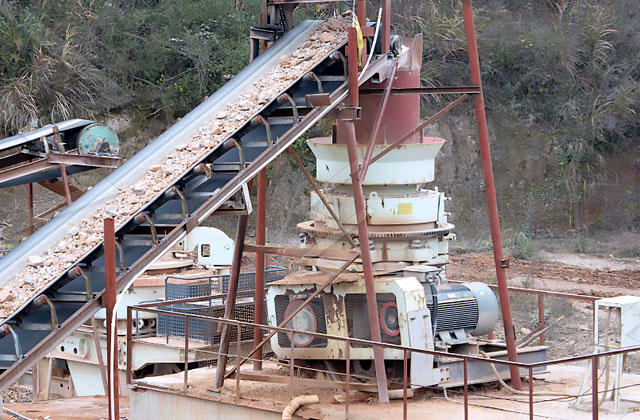Granite is a hard, dense igneous rock widely used in construction due to its durability and aesthetic appeal.To meet the growing demand for crushed granite, an efficient and reliable crushing production solution is essential. A well-designed granite crushing production line must optimize production capacity, ensure high efficiency, and deliver quality crushed granite that meets industry standards.
Primary Crushing Stage
The granite crushing process typically begins with primary crushing, where large chunks of granite are fed into a jaw crusher. Jaw crushers are effective at breaking down large boulders into smaller, more manageable pieces. The primary crushing stage aims to reduce the granite size to a range that can be further processed by secondary crushers. This stage is crucial for setting the foundation for subsequent stages, as it determines the quality and size of the final product. A high-capacity jaw crusher, capable of processing large volumes of granite, is typically used in this stage.

Secondary and Tertiary Crushing Stages
Following primary crushing, the material moves to the secondary crushing stage, where a cone crusher is typically employed. Cone crushers are known for their ability to produce smaller, more uniform-sized crushed granite. The secondary crusher reduces the size further, making the material suitable for screening and additional processing. If finer particles are required, a tertiary crushing stage with a vertical shaft impact (VSI) crusher or a fine cone crusher may be added. This additional stage ensures that the product meets specific particle size requirements for various applications, such as road construction or concrete production.
Screening and Separation
After the material has passed through the crushers, it enters the screening stage. This process involves the use of vibrating screens to separate the crushed granite into different sizes based on the project’s requirements. The most common sizes are coarse aggregates, fine aggregates, and sand. The screening process ensures that the material is appropriately sorted for specific uses, such as base material for roads or fine aggregate for concrete production. Efficient screening is vital in ensuring that only high-quality material proceeds to the next stage, enhancing the overall quality of the final product.
Material Handling and Stockpiling
Efficient material handling is crucial throughout the entire granite crushing production line. Conveyors are typically used to move crushed granite from one stage to the next. These conveyors should be designed for smooth operation to prevent material loss and to maintain a consistent flow of material. After screening, the material is stored in stockpiles, ready for sale or further processing. Proper stockpiling practices, including appropriate segregation by size, help maintain the quality of the crushed granite and ensure that different types of material are readily accessible for future use.
Automation and Control
Modern granite crushing production lines often incorporate advanced automation and control systems. These systems help monitor and optimize the entire crushing process, improving efficiency and reducing downtime. Automation can control feeding rates, crusher speeds, and material flow, ensuring that the production line operates at its peak capacity. Additionally, automated systems can detect potential issues early, allowing for proactive maintenance and reducing the risk of equipment failure. As a result, automation enhances the reliability and productivity of the granite crushing operation, making it more cost-effective in the long run.
In conclusion, a granite crushing production line must be designed to handle large volumes of material, efficiently reduce size, and produce high-quality crushed granite. From primary and secondary crushing to screening, material handling, and automation, each stage plays a vital role in ensuring the success of the operation. By selecting the right equipment and optimizing the production flow, operators can achieve consistent output and meet the ever-growing demand for crushed granite in various industries.
